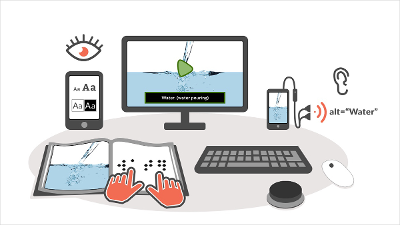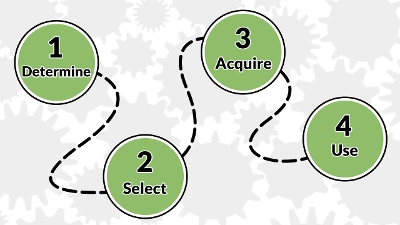Showing results 11-20 of 26 for copyright
Search results
-

Get to know the baseline and optional elements for version 1.1 of the NIMAS Technical Specification by reviewing the definitions of these elements and annotations reflecting changes from the published specification.
-
Learn about best practices for creating NIMAS-conformant files by reviewing our exemplars and related documentation.
-
Learn how the terms "eligible person" and "accessible formats" are now used in relation to NIMAS as a result of the enactment of the Marrakesh Treaty Implementation Act and its changes to copyright law.
-
Captioned videos not only improve accessibility for people with disabilities, they have far ranging learning and literacy benefits. Learn how to locate high-quality, accessible videos to support learning, and how to create your own.
-

Learn about the NIMAS and the NIMAC, two key provision of IDEA 2004, the special education law for elementary and secondary education in the U.S.
-
Learn about the responsibilities of state education and local education agencies (SEAs and LEAs) related to the provision of accessible formats from NIMAS files.
-
Learn how to vet and purchase materials to ensure they are accessible from the start, and the options for retrofitting inaccessible materials when it is necessary.
-

Based on the four POUR principles for accessible design, these questions are meant to help you evaluate the accessibility of digital educational materials prior to selection and procurement.
-

What actions need to be taken so that learners who need accessible formats receive them in a timely manner? Whether a learner is in PreK-12, higher education, or career training, the process is multi-step.
-
Get to know the definition of accessible formats in copyright law that helps guide the decision-making process for providing usable formats to learners who need them.
